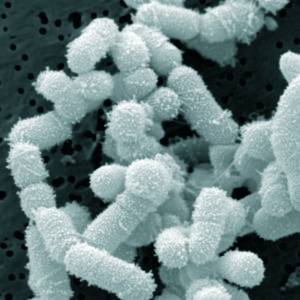 New research that found that microbial communities vary between the sinuses in a person with chronic sinusitis. This is a result that many sinusitis sufferers already suspect based on their sinusitis symptoms. The researchers also found that bacterial communities in the sinuses vary between people with chronic sinusitis. It is frustrating though for me to read study after study where the researchers focus on describing the types of bacteria found in chronic sinusitis sufferers (and then just saying that the sinus microbiomes or community of microbes vary from person to person) rather than studies comparing the sinus microbiomes (bacteria and other microbes, such as fungi) between healthy individuals and sinusitis sufferers.
New research that found that microbial communities vary between the sinuses in a person with chronic sinusitis. This is a result that many sinusitis sufferers already suspect based on their sinusitis symptoms. The researchers also found that bacterial communities in the sinuses vary between people with chronic sinusitis. It is frustrating though for me to read study after study where the researchers focus on describing the types of bacteria found in chronic sinusitis sufferers (and then just saying that the sinus microbiomes or community of microbes vary from person to person) rather than studies comparing the sinus microbiomes (bacteria and other microbes, such as fungi) between healthy individuals and sinusitis sufferers.
Since research finds that sinusitis sufferers have altered sinus microbiomes, then what would be really helpful now is finding more beneficial or keystone species (besides Lactobacillus sakei) that are needed for healthy sinus microbiomes. This would be an important step towards then adding (perhaps using a nasal spray) these missing microbes to the sinus microbiome. From Frontiers in Microbiology:
Bacterial communities vary between sinuses in chronic rhinosinusitis patients
ABSTRACT: Chronic rhinosinusitis (CRS) is a common and potentially debilitating disease characterized by inflammation of the sinus mucosa for longer than 12 weeks. Bacterial colonization of the sinuses and its role in the pathogenesis of this disease is an ongoing area of research. Recent advances in culture-independent molecular techniques for bacterial identification have the potential to provide a more accurate and complete assessment of the sinus microbiome, however there is little concordance in results between studies, possibly due to differences in the sampling location and techniques. This study aimed to determine whether the microbial communities from one sinus could be considered representative of all sinuses, and examine differences between two commonly used methods for sample collection, swabs and tissue biopsies. High-throughput DNA sequencing of the bacterial 16S rRNA gene was applied to both swab and tissue samples from multiple sinuses of 19 patients undergoing surgery for treatment of CRS. Results from swabs and tissue biopsies showed a high degree of similarity, indicating that swabbing is sufficient to recover the microbial community from the sinuses. Microbial communities from different sinuses within individual patients differed to varying degrees, demonstrating that it is possible for distinct microbiomes to exist simultaneously in different sinuses of the same patient. The sequencing results correlated well with culture-based pathogen identification conducted in parallel, although the culturing missed many species detected by sequencing. This finding has implications for future research into the sinus microbiome, which should take this heterogeneity into account by sampling patients from more than one sinus. It may also be of clinical importance, as determination of antibiotic sensitivities using culture of a swab from a single sinus could miss relevant pathogens that are localized to another sinus.
CRS can be a debilitating condition that is recalcitrant to treatment. Bacterial colonization of the sinuses is likely to play an important role in the pathogenesis and perpetuation of the disease; however different studies have yielded contrasting results with respect to which bacterial taxa are characteristic of the disease (ref). We observed bacterial communities dominated by different taxa in CRS patients; for example some have sinuses colonized primarily with Haemophilus, while others are dominated by Corynebacterium and Staphylococcus, or Pseudomonas. Some patients’ sinuses contain anaerobic bacteria such as Anaerococcus, Finegoldia, and Peptoniphilus, while these were absent from others. Indeed, our results have shown, for the first time, that it is possible for a patient to simultaneously have different bacterial communities in different sinuses, pointing to distinct, localized microbiomes within the same patient. Understanding this variation in the sinus microbiome could prove critical to the appropriate selection of treatments for CRS in the future.
The weighted unifrac distances between samples within patients (Figure 1) demonstrate that at least some CRS patients have substantial variation of bacterial communities between sinuses, although it is significantly smaller than the variation observed between different individuals. While this variation was related to abundance rather than the presence or absence of dominant community members, some of these variations were large: for example Corynebacterium sequences dominating the right sinuses of patient 003 (60.7 and 41.7% of all sequences), while the left sinuses had much smaller abundances (9.8 and 6.2%) and were dominated by the anaerobic bacteria Anaerococcus, Finegoldia and Peptinophillus.
